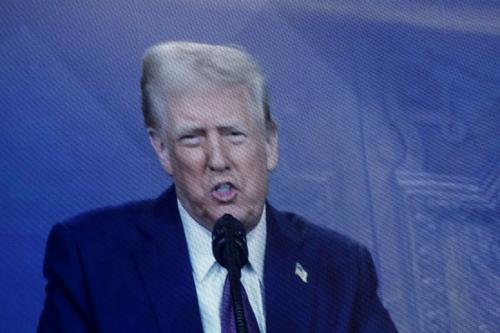American voters are
angry. But while the ill effects of globalization top their list of grievances,
nobody is well served when complex economic issues are reduced to
bumper-sticker slogans – as they have been thus far in the presidential
campaign.
It is unfair to
dismiss concerns about globalization as unfounded. America deserves to have an
honest debate about its effects. In order to yield constructive solutions,
however, all sides will need to concede some inconvenient truths – and to
recognize that globalization is not the same phenomenon it was 20 years ago.
Protectionists
fail to see how the United States’ eroding industrial base is compatible with
the principle that globalization boosts growth. But the evidence supporting
that principle is too substantial to ignore.
Recent research by the McKinsey Global Institute (MGI) echoes the
findings of other academics: global flows of goods, foreign direct investment,
and data have increased global GDP by roughly 10% compared to what it would
have been had those flows never occurred. The extra value provided by
globalization amounted to $7.8 trillion in 2014 alone.
And yet, the
shuttered factories dotting America’s Midwestern “Rust Belt” are real. Even as
globalization generates aggregate growth, it produces winners and losers.
Exposing local industries to international competition spurs efficiency and
innovation, but the resulting creative destruction exacts a substantial toll on
families and communities.
Economists and
policymakers alike are guilty of glossing over these distributional
consequences. Countries that engage in free trade will find new channels for
growth in the long run, the thinking goes, and workers who lose their jobs in
one industry will find employment in another.
In the real
world, however, this process is messy and protracted. Workers in a shrinking
industry may need entirely new skills to find jobs in other sectors, and they
may have to pack up their families and pull up deep roots to pursue these
opportunities. It has taken a popular backlash against free trade for
policymakers and the media to acknowledge the extent of this disruption.
That backlash
should not have come as a surprise. Traditional labor-market policies and
training systems have not been equal to the task of dealing with the
large-scale changes caused by the twin forces of globalization and automation.
The US needs concrete proposals for supporting workers caught up in structural
transitions – and a willingness to consider fresh approaches, such as wage
insurance.
Contrary to
campaign rhetoric, simple protectionism would harm consumers. A recent study by the US President’s Council of Economic Advisers
found that middle-class Americans gain more than a quarter of their purchasing
power from trade. In any event, imposing tariffs on foreign goods will not
bring back lost manufacturing jobs.
It is time to
change the parameters of the debate and recognize that globalization has become
an entirely different animal: The global goods trade has flattened for a
variety of reasons, including plummeting commodity prices, sluggishness in many
major economies, and a trend toward producing goods closer to the point of
consumption. Cross-border flows of data, by contrast, have grown by a factor of
45 during the past decade, and now generate a greater economic impact than flows
of traditional manufactured goods.
Digitization is
changing everything: the nature of the goods changing hands, the universe of
potential suppliers and customers, the method of delivery, and the capital and
scale required to operate globally. It also means that globalization is no
longer exclusively the domain of Fortune 500 firms.
Companies
interacting with their foreign operations, suppliers, and customers account for
a large and growing share of global Internet traffic. Already half of the
world’s traded services are digitized, and 12% of the global goods trade is
conducted via international e-commerce. E-commerce marketplaces such as
Alibaba, Amazon, and eBay are turning millions of small enterprises into
exporters. This remains an enormous untapped opportunity for the US, where fewer than 1% of
companies export– a far lower share than in any other advanced economy.
Despite all the
anti-trade rhetoric, it is crucial that Americans bear in mind that most of the
world’s customers are overseas. Fast-growing emerging economies will be the
biggest sources of consumption growth in the years ahead.
This would be the
worst possible moment to erect barriers. The new digital landscape is still taking
shape, and countries have an opportunity to redefine their comparative
advantages. The US may have lost out as the world chased low labor costs; but
it operates from a position of strength in a world defined by digital
globalization.
There is real
value in the seamless movement of innovation, information, goods, services, and
– yes – people. As the US struggles to jump-start its economy, it cannot afford
to seal itself off from an important source of growth.
US policymakers
must take a nuanced, clear-eyed view of globalization, one that addresses its
downsides more effectively, not only when it comes to lost jobs at home, but
also when it comes to its trading partners’ labor and environmental standards.
Above all, the US needs to stop retrying the past – and start focusing on how
it can compete in the next era of globalization.
Editor’s note: this piece first appeared on Project-Syndicate.org.
The Brookings Institution is committed to quality, independence, and impact.
We are supported by a diverse array of funders. In line with our values and policies, each Brookings publication represents the sole views of its author(s).



Commentary
Op-edWhen globalization goes digital
June 24, 2016